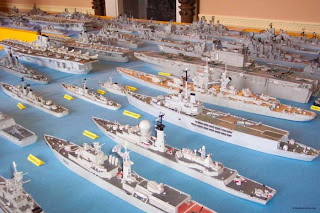the bottom of the world's deepest freshwater lake.
In the past few days the crew of a mini submarine carrying out a
mapping exercise in Lake Baikal spotted some 'shiny metal objects'
some 1,200ft down in the murky depths.
Legend has it that 1,600 tons of gold was lost when White Army
commander Admiral Alexander Kolchak's train derailed and plunged into
the Siberian lake.
Another version has it that troops retreating on foot and
horsecarriage across Baikal's icy surface froze to death as
temperatures hit -60C (minus 76F) in the winter of 1919-20.
When the spring thaw arrived, they and the sacks of Imperial gold sank
to the bottom of the massive lake
Last year remnants of a train and ammunition boxes were found in the
lake but in recent days the Mir-2 submersible made this new discovery
1,200 feet below the surface at Cape Tolsty.
'Deep-sea vehicles found rectangular blocks with a metallic gleam,
like gold, 400 metres below the surface,' said one source.
Moscow News reported the story with the headline 'Lost gold of the
Whites found in Baikal'.
Explorers attempted to grab hold of the shiny objects with the
mini-sub's manipulator arm but failed due to the loose gravel on the
lake's floor.
Sources say that the submariners know the exact spot and are planning
a new mission to determine if they have found the gold, and if so to
bring a sample to the surface.
Last year, Inna Kyrlova, the deputy director of the Fund for the
Protection of Lake Baikal, one of the bodies funding the research,
acknowledged that the submarines were exploring locations reputed to
be linked to Kolchak's gold.
But she added: 'Our expedition's primary interest is the flora, fauna
and geology of Baikal and monitoring current conditions in the lake.'
Kolchak was a hero in the First World War who later led the
pro-Tsarist White Army against the Bolsheviks after the 1917 October
Revolution.
He had a few early successes but was eventually arrested by Lenin's
henchmen and executed by firing squad in January 1920.
The Russians reneged on a promise to hand him over to the British
military mission in Irkutsk.
His body was hidden by revolutionaries under the ice of the Angara
River which flows out of Baikal.
Had he escaped, it is likely he would have sought exile in London -
bringing the gold with him.
If the alleged treasure has been found, it could spark an ugly
scramble between the Russian state, descendants of the last Tsar
Nicholas the Second, and countries - possibly including Britain - that
could argue they are owed outstanding debts by the fallen Romanov
regime.
In 2008, historian Sean McMeekin outlined how the Bolsheviks seized
the Tsar's gold bullion - which was Europe's largest strategic gold
reserve - then sold it off to help pay for the revolution.
In his book History's Greatest Heist, McMeekin claimed Lenin's
henchmen secretly auctioned off the treasure abroad.
The mini-sub team - currently conducting a mapping exercise in the
lake - have not said when they will return to the scene.
The vast Lake Baikal contains 20 per cent of the world's fresh water.














































